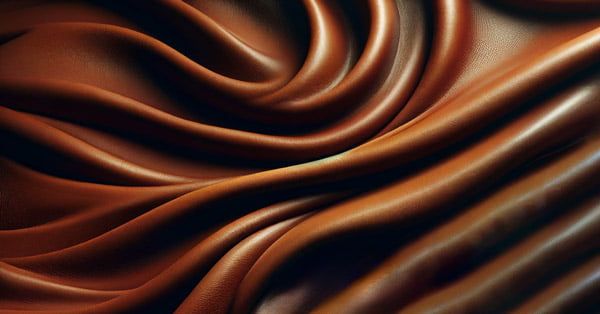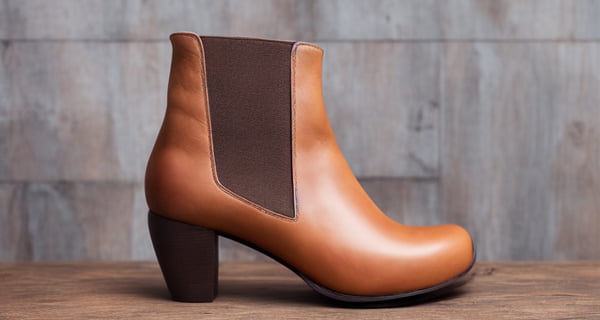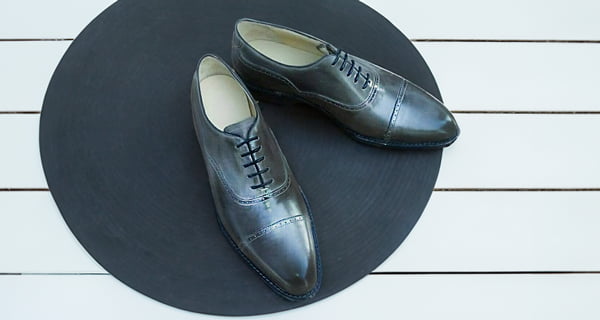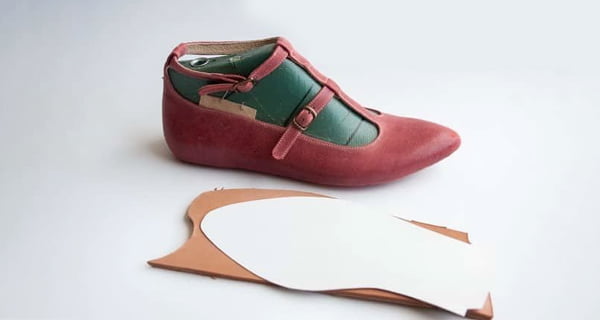Decoding Leather Types: Full-Grain vs. Top-Grain in Shoemaking
When it comes to shoemaking, the distinction between Full-Grain and Top-Grain leather is crucial.
In the realm of shoemaking, understanding the nuances between Full-Grain and Top-Grain leather is very important both these leathers are top-tier choices, but they serve different purposes and possess unique characteristics. For beginners in shoemaking, this distinction can be the difference between crafting a shoe that's merely good and one that's truly exceptional. This article dives deep into these differences, ensuring that even if you're just starting out, you'll make informed leather choices. To learn more about many other leather types, read this article: "Shoe making supplies-Leather in Shoemaking".
The Beginner's Dilemma:
For those new to shoemaking, the vast array of leather types can be overwhelming. It's not just about picking a leather that looks good; it's about understanding the leather's properties, how it will wear over time, and how it will shape the final product. The choice between full-grain and top-grain is one such critical decision. Let's break down these types to simplify this choice.
Full-Grain Leather characteristics

Natural Surface: Full-grain leather showcases the hide's genuine surface, complete with its unique imperfections, scars, or pores. This authenticity gives it a raw, unmatched look.
Durability:Unaffected by sanding or buffing procedures, it represents the ultimate strength in leather. Its tightly packed grain design keeps moisture out, promoting a long lifetime and graceful aging.
Patina Development: A hallmark of full-grain leather is the rich patina it develops over time, enhancing its visual appeal.
Feel: It offers a dense, smooth touch, boasting a natural texture that's easily recognizable.
Usage in Shoemaking: For high-quality products, full-grain is the go-to. In my Bespoke Derby Handsewn Opanka shoe course I chose full-grain for its unmatched quality and natural texture. Crafting shoes with genuine materials, full-grain was an obvious choice. Consider utilizing materials that age gracefully when creating shoes if your goal is to create something that is both incredibly comfortable and long-lasting—tailored to the specific curves of your foot. These shoes will acquire a stunning patina with time, providing long-lasting enjoyment and pleasure in the superb shoes you've carefully made.
Top-Grain Leather characteristics

Refined Surface: The top layer of the hide undergoes sanding or buffing to eliminate imperfections, resulting in a more consistent and refined appearance.
Flexibility: Top-grain leather is more pliable and thinner than full-grain, making it a versatile choice for various products.
Finish: A finish coat is often applied to top-grain leather, enhancing its stain resistance. However, this can sometimes give it a slightly plastic-like feel.
Aging: Unlike full-grain, top-grain leather maintains a consistent look throughout its life, without developing a natural patina.
Usage in Shoemaking: Top-grain leather's flexibility and resistance make it suitable for certain shoe types. In the sneakers course, we chose top-grain leather for its adaptability and resilience, ideal for crafting durable and stylish sneakers. This type of leather is ideal for the delicate decorative element inside the sneaker's upper. Its texture facilitates a beautiful, plush stitch pattern, enhanced by the foam sandwiched between the upper and lining in the Vans sneakers. Similarly, we selected top-grain leather for its suppleness to craft the tongue and the rear section of the low-top sneaker variant that weoffer in the same sneakers course. Additionally, top-grain leather is perfectly suited for crafting boots. You can opt for a thicker variety, as demonstrated in my Dr. Martens Boot Course.
Can the thickness of the leather help differentiate between these two types?
The thickness of leather can provide some clues, but it's not a definitive or exclusive characteristic to distinguish between full-grain and top-grain leather. Both full-grain and top-grain leather can come in various thicknesses, depending on how the hide is split and processed. However, there are some general observations:
Full-Grain vs. Top-Grain and Leather Thickness
Animal Source: While the animal source primarily determines the inherent thickness of the hide, the distinction between full-grain and top-grain comes from which part of that hide is used. Full-grain leather uses the outermost layer, which is naturally the thickest and most durable part. Top-grain leather, on the other hand, has had the very top layer sanded off, making it slightly thinner than full-grain.
Intended Use: Full-grain leather, with its natural thickness and durability, is often preferred for products that require a robust and long-lasting material, such as high-quality belts, saddles, or luxury footwear. Top-grain leather, being more pliable, might be chosen for items where flexibility is more crucial, like jackets or certain types of handbags and shoes, especially casual footwear like Oxford, Derby, or sneakers.
Tanning Process: Both full-grain and top-grain leathers can undergo various tanning processes. However, because full-grain retains all of its natural grain, it might showcase the unique characteristics of the tanning process more vividly. Top-grain, having been sanded, might have a more uniform appearance post-tanning.
Finishing Techniques: Full-grain leather is typically left as-is after tanning to showcase its natural grain and imperfections. In contrast, top-grain leather often undergoes further finishing, like embossing or pigmentation, to achieve a more consistent appearance. This additional processing can sometimes affect the leather's thickness, especially if it's been split to create a smoother surface.
While the inherent thickness of a leather piece can be influenced by the animal source and tanning process, the distinction between full-grain and top-grain plays a significant role in determining its final thickness, texture, and appearance. Knowing the difference between these two types is crucial for anyone working with leather, as it affects both the material's aesthetics and functionality.
Physical Examination - Distinguishing the Two:
For beginners, a hands-on approach is often the best way to understand the difference. When examining full-grain leather, you'll notice more natural marks and a less uniform appearance compared to top-grain leather. The presence of a genuine grain pattern and the way the leather ages can also hint at its type. Full-grain feels denser and has a more pronounced natural texture, while top-grain feels smoother due to its refined surface.
Also, if you were to run your fingernail lightly across the surface of both types of leather, full-grain leather would typically show the scratch more readily than top-grain leather.

Full-Grain Leather: Since full-grain leather retains the entire natural grain of the hide, it is more susceptible to scratches and scuffs. However, many leather enthusiasts and craftsmen appreciate this characteristic because it allows the leather to develop a unique patina over time. Each scratch, scuff, or mark adds to the leather's character and tells a story of its use.
Top-Grain Leather: The surface of top-grain leather has been sanded or buffed to remove imperfections, which also removes the most external layer of the grain. This process makes the surface smoother and more uniform, and as a result, top-grain leather is often more resistant to scratching compared to full-grain leather. Additionally, top-grain leather often has a finish coat applied, which can further protect it from scratches.
How to define which is leather type is in the online stores
Distinguishing between full-grain and top-grain leather in an online store can be a bit challenging since you can't physically touch or closely inspect the leather. However, there are some strategies and tips beginners can employ to make an informed decision:
Product Description: Always read the product description thoroughly. Reputable sellers will specify the type of leather used. Look for terms like "full-grain" or "top-grain" in the description.
Price Point: Full-grain leather is generally more expensive than top-grain due to its quality and durability. If the leather is priced significantly lower than what you'd expect for full-grain, it might be top-grain or another type of leather.
Close-up Images: Look for close-up photos of the leather. Full-grain will often show natural imperfections, pores, or a more natural grain pattern. Top-grain might appear more uniform.

Reviews: Check customer reviews. Often, previous buyers will mention the quality and type of leather, especially if it stood out to them in any way.
Ask the Seller: If in doubt, reach out to the seller or customer service. They should be able to provide more details about the leather type.
Brand Reputation: Established brands or sellers that specialize in leather products are more likely to provide accurate information about the type of leather they're selling.
Return Policy: Before purchasing, check the return policy. If the leather doesn't meet your expectations once received, you'll want the option to return or exchange it.
Remember, while these tips can help, there's always a level of uncertainty when shopping online. It's essential to buy from reputable sources and be prepared to return items that don't meet your expectations
Concluding Remarks: Selecting the Type of Leather for Your Shoes
Knowing your leathers is a must in shoemaking. Whether you're going for the natural look of full-grain or the smooth finish of top-grain, picking the right leather ensures your shoes look great, feel comfortable, and last a long time. Dive deeper into differnt types of full-grain leather and types of top-grain leather. Additionally, for an in-depth understanding of the shoemaking process and to learn how shoes are crafted, I encourage you to read the article: "How Shoes Are Made".
Top Shoemaking Courses To Learn Now
This is the first online platform that offered shoe making online, and since 2013 we offer top shoe making course here.
Here you will find starting courses for total beginners, special footwear making techniques courses and professional courses for shoemakers with expirence.
From Sneakers course and Men's focused footwear courses, to full shoe making programs.
Here is the top shoemaking bundles and programs our students love.



